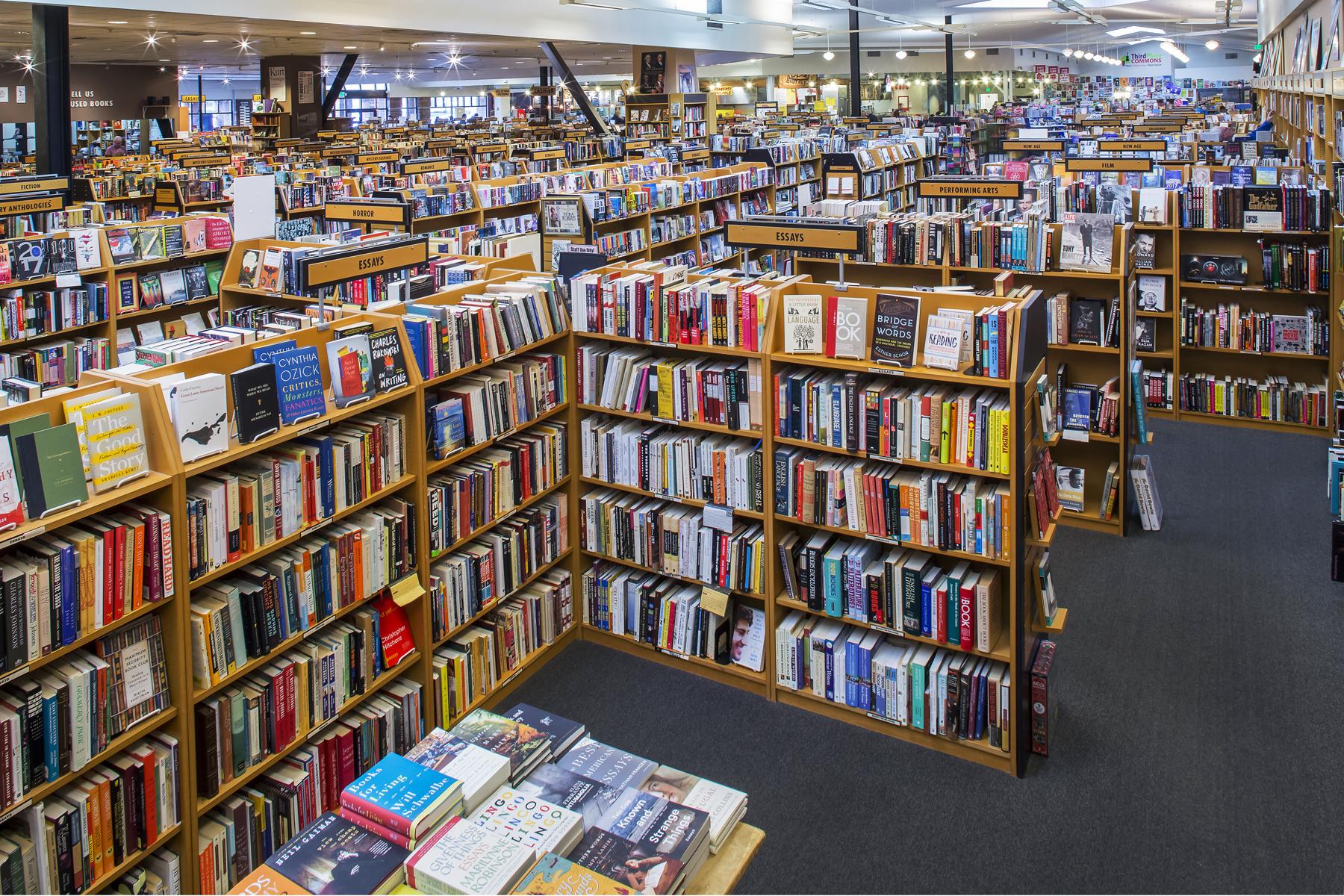♫ Come on, ride the train, hey, ride it / Come on, it’s the choo choo train ♫
Airplanes are a wondrous testament to the ingenuity of humans. These truly impressive machines are incredible feats of technology and provide the means to access far-flung destinations in a matter of hours. But human innovation has its limits, and these days air travel has become more expensive, less comfortable, and fraught with never-ending hassles.
The good news is that the journey from one place to another doesn’t have to send you flying off the handle. As air travel loses its luster, trains have started roaring back into fashion. With comprehensive rail networks in operation all over the world and new upgrades on classic routes, travelers have plenty of reasons to steer clear of the sky and work that railroad instead.
Avoid the Airport
Besides its primary use as the gateway to air travel, the airport also serves as an exercise in determining the true state of your mental health. Everything could be fine and dandy in your life and then—BLAM—now you are in the airport, where you are informed that your bag is too heavy, followed up by a defense attorney-level argument at security to retain your expensive moisturizer, after which you find yourself trying to escape from duty-free. We don’t even need to pretend that your flight is delayed … because of course it is.
The unpredictability and endless shenanigans encountered at the airport can be avoided altogether by taking the train. Train travel is far more predictable than flying, with fewer steps required from inception to completion, fewer encounters with people and protocols, and the freedom to bring along that life-giving bottle of water.
Pack What You Want
Luggage is far more open to interpretation when riding the train. Pack that big toothpaste tube and spray-on sunscreen because ounce-for-ounce the train luggage allowance far outweighs that of the plane. It is safe to assume you can bring two suitcases at least, but on the train, there is no security line and therefore nobody is counting your bags before you board.
Recommended Fodor’s Video
Seats Are a Treat
The basic seating situation on the train far surpasses the economy accommodations on the airlines. Seats on the train are designed with the human body in mind as opposed to the clown car cramming approach that most airlines employ. Train seats tend to be wider and are sometimes equipped with a footrest or the option to relax into a generous recline position. Many trains only have two seats to a side, meaning nobody has to tolerate sitting in or next to the dreaded middle seat. Windows can be opened for fresh air, and luggage can be stowed immediately upon entering the train car. Those who want to work can choose a seat at a table while those who like to get wild can opt to ride the train in reverse. What fun!
Superior Service
Most airlines offer impeccable service—as long as you are spending thousands of dollars or millions of miles. If not, the skies aren’t necessarily quite as friendly as advertised. Of course, there are times when the service is good even in lowly economy, but it should be widely accepted that working for an airline is a stressful job. There are far more protocols and policies that must be observed on behalf of the airline employees and the passengers, and ultimately, neither party gives a hoot the other’s opposing-yet-inextricably-aligned struggles. On the train, the mood tends to be lighter and more laidback. The illusion of safety is not at the forefront, the dining car serves drinks, and the restroom is always open for business.
First Class Is Attainable
Unless you are flush with cash or are racking up some serious air milage, most regular people cannot afford first or business class seats on a flight. On the train, the playing field is leveled out considerably. Most train tickets offer more than reasonable prices for the first-class option, and if the train is very nice and the ride is long, the upgrade is well worth the extra expense.
Fewer Surprise Fees
There is nothing quite like the realization that the cheap plane ticket you purchased was merely a smokescreen to a barrage of hidden fees that await you the moment you set foot into the airport. Boarding pass print-out fee! Seat selection charge! Water purchase! Additional overcharge! The train is a far more predictable beast, as is its nature. The ticket is all you need. Depending on the train, a first-class ticket might include snacks and drinks, which is the opposite of surprise fees (surprise frees!)
Small-Scale Scenery
Planeside views are certainly magical—most humans have never had the chance to see our world from so high above the ground and all while drinking tomato juice over ice. As wondrous as it is to see the earth from above, if you throw in a little cloud cover, those sublime views fly right out the window.
The in-your-face small-scale scenery that rumbles by on a train is ideal for observing the details. Admiring the landscape at ground level provides insight into a place and the opportunity to absorb the everyday goings-on, and if it looks really inviting, could inspire an unexpected detour.
Less Bodily Compromise
Human bodies are not built for speeds over 500 mph at 35,000 feet, and moving through space and time at these unnatural rates can create more than one disruption in the body’s functionality. Most common are digestive issues, reduced blood circulation, sleep disruptions, and immune system compromise. Trains do not majorly mess with your body, plus if you are taking an overnight train, the sleeper car is there to stretch out the legs and shut those red eyes.
Less Pre-Travel Time
The common practice is to arrive at the airport at least two hours prior to departure as getting through security has the potential to consume quite a bit of time. Trains generally do not have a security line. Some high-speed trains or trains that traverse multiple countries may require early arrival to clear customs, but for the most part, to catch a train, you just need to be on it when it leaves.
Less Post-Travel Time
Airports tend to be located far outside of a city, therefore additional transport is required to complete your journey. One huge perk of the train is that it stops right in the city center, cutting down, or eliminating the need for subsequent time and money to reach your final destination.
Stay on Schedule
An on-time as-scheduled flight is all too rare, and depending on what airport you are flying out of, delays might be the norm. Historically, trains are known for their timely fashion, and the concept of standardizing time was originally inspired by the need to coordinate the traffic on the railroads. In the meantime, nobody is out here setting their watch to their boarding pass.
Restrooms You Can Relax In
Airlines are always finding new ways to cut down on bathroom space wherever it can (yet still making room for an ashtray labeled with a No Smoking sign). Train bathrooms are far roomier, as they are built to accommodate passengers that need extra space. Often times there are two bathrooms on every car, which cuts down on any handle-jiggling anxiety one may feel while in the midst of an extended bathroom session.
Move Freely
Airplane announcements would like us to believe that at some point we are free to move about the cabin, but to … where, exactly? That sliver of space directly in front of the first row seats? Or that squished square of empty floor next to the airplane door? Neither inspires feelings of freedom or movement, and nobody standing in either of those places has yet to figure out what to do with their arms.
The train offers more habitable spaces to passengers. The dining car is a great place to get out of your seat and move to yet a different seat but one that encourages the enjoyment of food and drinks. There are no assigned seats on the train, so if a baby is crying or a man is snoring or creeping, you are free to move into an unoccupied spot. The ultimate freedom of movement in the train is the ability to get off of the train whenever you want, so long as it is a stop.
Smooth Ride
No matter the weather, the skies can be bumpy, and serious turbulence can not only make you queasy but also prompt you to reevaluate the intimacy of the relationship between you and the stranger that’s sitting next to you.
Train travel varies in the quality of the ride, and although it can be bumpy at times, at least it is happening at around zero feet above sea level. Modern high-speed trains are as smooth as butter, and even though the older, more rickety cars give you that sweet clickity-clack sound that is so enjoyable.
Train Stations > Airports
As trains have been in operation for almost two centuries, the train station was the showpiece for many cities and towns all over the world. The train station was the first thing most visitors would see upon arriving in a city, and therefore it was built to be an impressive display of a city’s architectural capabilities and design aesthetic. Some train stations are so magnificent that they are worth seeing even if you aren’t riding the train, and everyone is free to come in and have a look around. Absolutely none of these things can be said about airports.
Experience Everyday Life
On the plane, the demographics can skew toward well-heeled international or business travelers. In a region or country with an extensive rail network, most citizens opt for the train over the plane as it is often cheaper and more convenient. Taking the train is a better option for visitors to experience what everyday life is like for the locals. Folks on the train tend to be less frazzled and nervous than those who have endured the hectic environment of the airport. Relaxed people who are not upset about overpaying for a sandwich are likely more willing to have a friendly chat with a stranger.
Flexible Tickets
Unlike a plane, affordable tickets for a train do not need to be purchased well in advance. Unless the route is busy or limited, a train ticket can usually be bought prior to departure, eliminating the risk of change fees or losing all the money if a trip is canceled. If you purchase a train ticket in advance and then miss the train, chances are good you can get on the next one without paying anything extra.
Environmentally Friendly
As amazing as it is to hop on a cheap flight for a quick journey, these short-haul flights produce the most carbon emissions of any transport option. If you are trying to do your part to conserve whatever environment is still hanging on at this point, trains are a more earth-friendly method of travel.
Tech-Enabled
Forget airplane mode, on the train you never have to turn anything off (except your speakers, come on). Many rail operators provide Wi-Fi, and if it actually works, you can surf the net and ‘gram your trip non-stop from point A to B.
Ride in Style
The stylish, romantic era of train travel is making a comeback. Travelers have a growing interest in making the journey part of the adventure, and there are routes around the world that are stepping it up to offer passengers an all-inclusive luxury train experience. In Canada, the Rocky Mountaineer traverses untouched wilderness and stunning landscapes in a domed glass-top train car. South Africa’s Rovos Rail is complete with elegant decor, four-course meals, and safari stops along the way that transport passengers back into train travel’s glamorous past.




